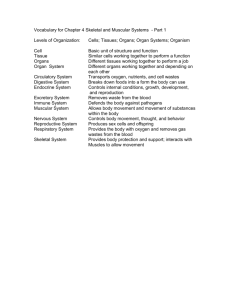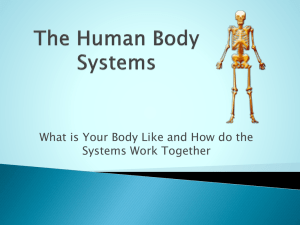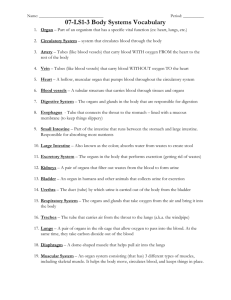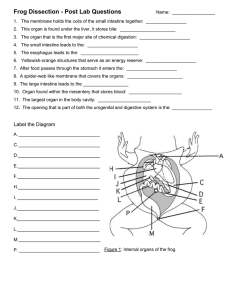The human body consists of eleven organ systems that are... These organ systems are described individually. Identify the organ... _____________________ allows movement and locomotion. The _____________________ produces body
advertisement
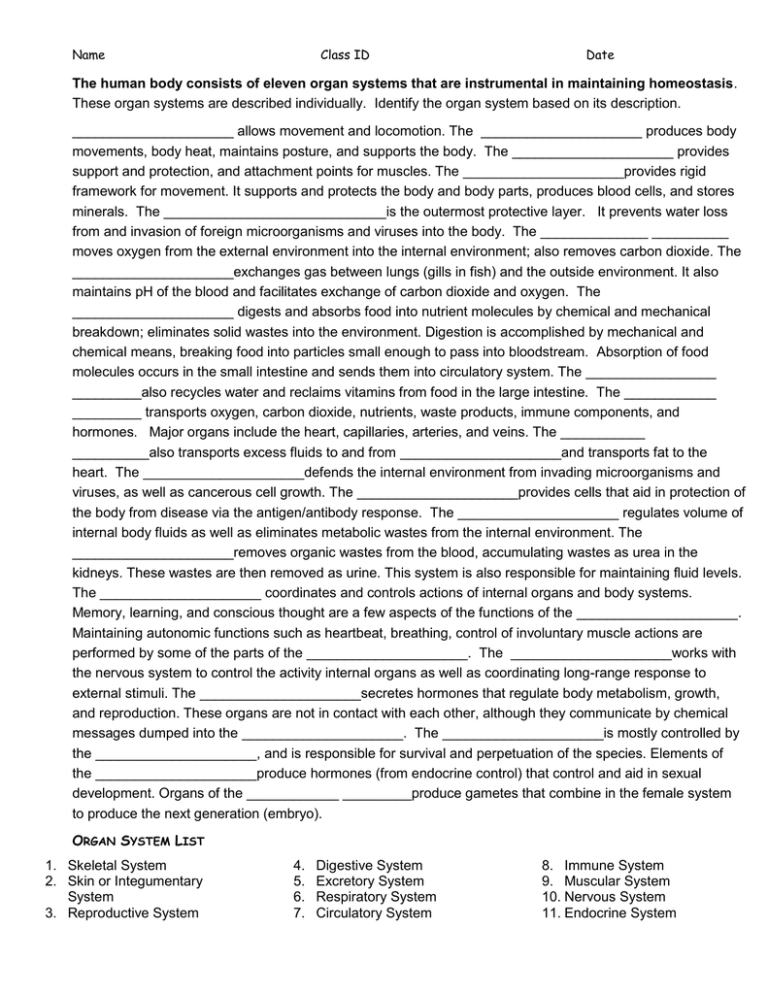
Name Class ID Date The human body consists of eleven organ systems that are instrumental in maintaining homeostasis. These organ systems are described individually. Identify the organ system based on its description. _____________________ allows movement and locomotion. The _____________________ produces body movements, body heat, maintains posture, and supports the body. The _____________________ provides support and protection, and attachment points for muscles. The _____________________provides rigid framework for movement. It supports and protects the body and body parts, produces blood cells, and stores minerals. The _____________________________is the outermost protective layer. It prevents water loss from and invasion of foreign microorganisms and viruses into the body. The ______________ __________ moves oxygen from the external environment into the internal environment; also removes carbon dioxide. The _____________________exchanges gas between lungs (gills in fish) and the outside environment. It also maintains pH of the blood and facilitates exchange of carbon dioxide and oxygen. The _____________________ digests and absorbs food into nutrient molecules by chemical and mechanical breakdown; eliminates solid wastes into the environment. Digestion is accomplished by mechanical and chemical means, breaking food into particles small enough to pass into bloodstream. Absorption of food molecules occurs in the small intestine and sends them into circulatory system. The _________________ _________also recycles water and reclaims vitamins from food in the large intestine. The ____________ _________ transports oxygen, carbon dioxide, nutrients, waste products, immune components, and hormones. Major organs include the heart, capillaries, arteries, and veins. The ___________ __________also transports excess fluids to and from _____________________and transports fat to the heart. The _____________________defends the internal environment from invading microorganisms and viruses, as well as cancerous cell growth. The _____________________provides cells that aid in protection of the body from disease via the antigen/antibody response. The _____________________ regulates volume of internal body fluids as well as eliminates metabolic wastes from the internal environment. The _____________________removes organic wastes from the blood, accumulating wastes as urea in the kidneys. These wastes are then removed as urine. This system is also responsible for maintaining fluid levels. The _____________________ coordinates and controls actions of internal organs and body systems. Memory, learning, and conscious thought are a few aspects of the functions of the _____________________. Maintaining autonomic functions such as heartbeat, breathing, control of involuntary muscle actions are performed by some of the parts of the _____________________. The _____________________works with the nervous system to control the activity internal organs as well as coordinating long-range response to external stimuli. The _____________________secretes hormones that regulate body metabolism, growth, and reproduction. These organs are not in contact with each other, although they communicate by chemical messages dumped into the _____________________. The _____________________is mostly controlled by the _____________________, and is responsible for survival and perpetuation of the species. Elements of the _____________________produce hormones (from endocrine control) that control and aid in sexual development. Organs of the ____________ _________produce gametes that combine in the female system to produce the next generation (embryo). ORGAN SYSTEM LIST 1. Skeletal System 2. Skin or Integumentary System 3. Reproductive System 4. 5. 6. 7. Digestive System Excretory System Respiratory System Circulatory System 8. Immune System 9. Muscular System 10. Nervous System 11. Endocrine System Name Class ID Date Using the diagram below, explain one way the body attempts to correct low blood pressure. Before answering, consider each of the organ’s roles. Releases Releases Results In Results In ANSWER
